December Walking Tour – Dormant Trees in the Gardens
During the dark and cold parts of the year a garden can seem colorless and devoid of life. We may walk through it with eyes to the ground or avoid going out into the Gardens at all. As we approach the new year we are also faced with the traditional time of contemplation of our past year, the structure of our lives and our hopes for the future. It is in this mindset that I think the winter garden is a perfect place to look at the trees around us laid bare while considering our own life paths. During summer trees are filled with leaves and blooms which, while beautiful, obscure the scaffolding and support that hold these massive organisms together. I enjoy spending a few minutes staring at a single tree from a distance, following the branching and imagining how each massive branch was formed when it was only a slender twig. Come along with me.
June’s PlantAsia
Begin at the southwest corner of the Dwarf Conifer Collection and look east down the path toward the moon gate in June’s PlantAsia. A Kentucky coffee tree (Gymnocladus dioicus) towers next to the moon gate. This tree has what I would call a “wiggly” growth pattern, weaving back and forth. I love the movement of this tree. Its irregularities are offset by the more precisely growing SKYLINE® thornless honeylocust (Gleditsia triacanthos f. inermis ‘Skycole’) rising out of PlantAsia just to the left. Stop and spend several moments to stare and tune your eyes to the subtleties of this season’s color and texture, notice how the red hues from the honeylocust contrast with the slate grey of the coffee tree. To the right, see how the soft, feathery, beige-colored dormant Siberian larch (Larix sibirica ‘Conica’), a unique deciduous conifer, plays off the courser textures of the other two trees.
Turn around and immediately in front of you to the left of the path is a green ash (Fraxinus pennsylvanica). Ash trees have opposite branching, which means that two branches emerge at the same point on a stem, on opposite sides of it. You can easily see the forked branching pattern represented all the way from the tiny new growth down to the largest branches. Notice also how this tree’s branches arch downward and then flex up at the tips. This movement is caused by a ballet of opposing forces acting out over time and becoming solidified into the tree’s form as branches thicken. New growth tips arch skyward to receive more light. Over time as new growth becomes old, gravity pulls the increasingly heavy branches downward. The effect is beautiful: A form shaped by time, the tree’s genetic plan and the chaos of environmental factors.
South African Plaza
Walk down the steps and into South African Plaza, stopping in the middle of the plaza to look north to the three stately Ohio buckeyes (Aesculus glabra) at the crossroad. Like the ash, these trees also have opposite branching, though you might have to look more closely to see it. I love how these trees flex their upper branches outward, like if you put your arms straight upward and bent your wrists out. Do that now and imagine staying there for the many years that it took for those shapes to form, season by season.
Rock Alpine Garden
Walk to the Rock Alpine Garden and down the main path. Immediately upon entering the garden you’ll see a small tree to the left of the path, the curly willow (Salix matsudana ‘Snake’). If the Kentucky coffee tree is a wiggly growth tree, this one is comically so. Its contortions look like a wooden representation of the movements of fire. Smile at the absurdity of this tree. Walk down the main path and look left across the garden and to the weeping birch (Betula pendula). The stark contrast of colors and shapes on this tree are incredible. Bone-white bark against red-hued tips, large stick-straight branches paired with arching, finely textured new growth trailing down toward the ground.
Gates Montane Garden
As you leave the Rock Alpine Garden and enter the densely wooded Gates Montane Garden you will see an icon of the Rocky Mountains: the quaking aspen (Populus tremuloides). The branching pattern of an aspen is alternate, meaning one branch emerges at a single point on a stem, and then further on another emerges on the other side of the stem. You can see this easily at the new tip growth, though you will probably struggle to see that pattern lower down into the older growth. The patterns laid down at the tip growth points are quickly muddled as the tree regularly drops lower branches that do not receive enough light. The branch dropping is an adaptation that allows the tree to conserve energy as older branches become more shaded by new growth higher up. Many aspens have no branches off the main trunk at all until fairly high up on the tree. Aspen bark varies in color from creamy white to soft grey and pale green and has characteristic black spots where past limbs have dropped off. Aspen bark quickly heals after being damaged, leaving a black scar behind that contrasts strongly with the white bark.
Winter is an excellent time to be quiet and introspective. Much like the trees, the shapes of our lives are laid open during periods of quiet. At this point in the year we can look at where we came from and to where we are going. We must examine the objects, behaviors and emotions that we are clinging to, and like the aspen, decide which we must shed in order to walk forward into spring. Now continue to walk through the Gardens and beyond, with your gaze inward and upward.
Gallery
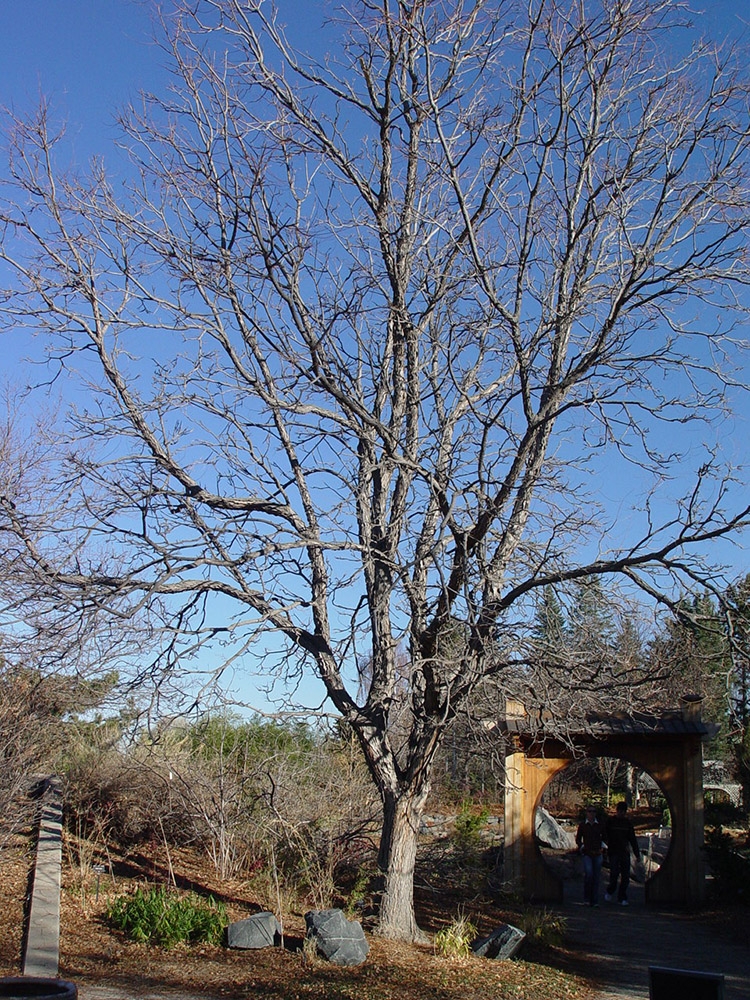

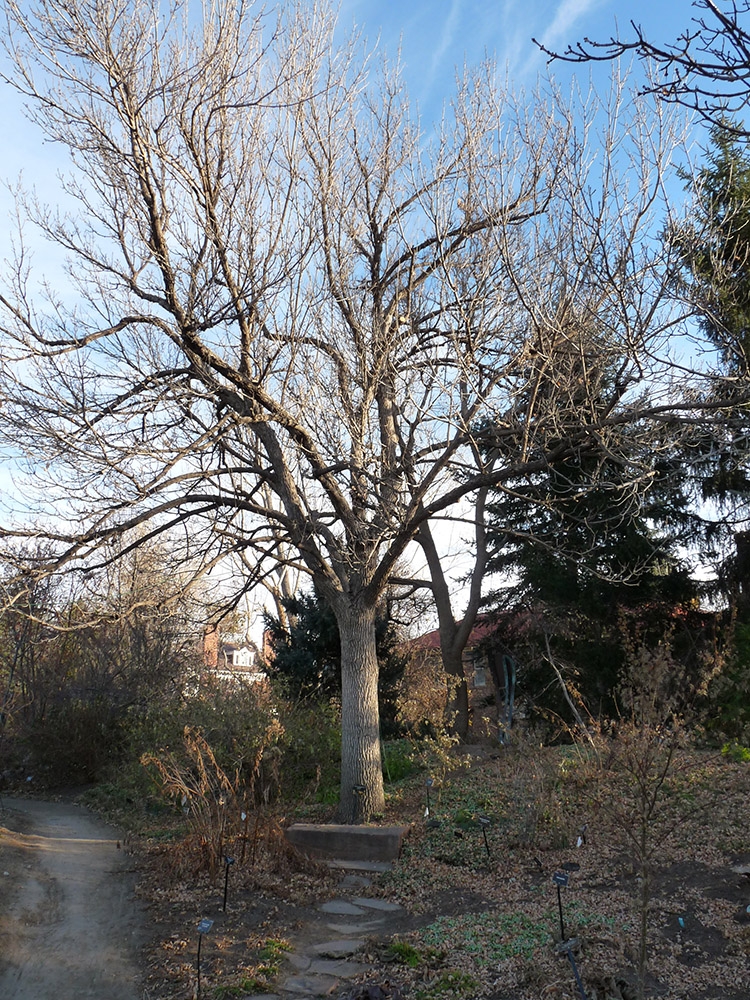
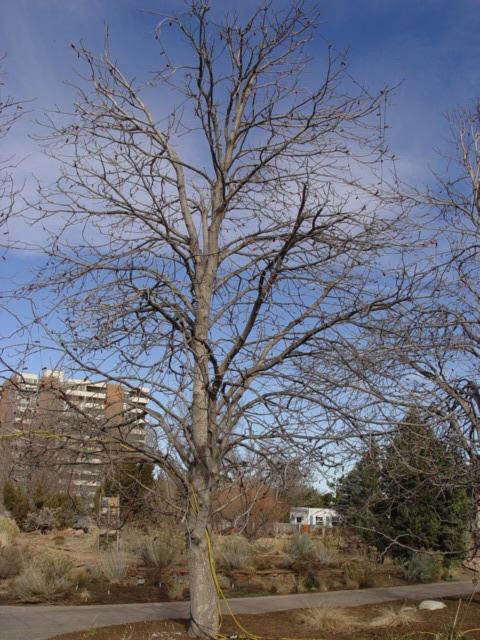
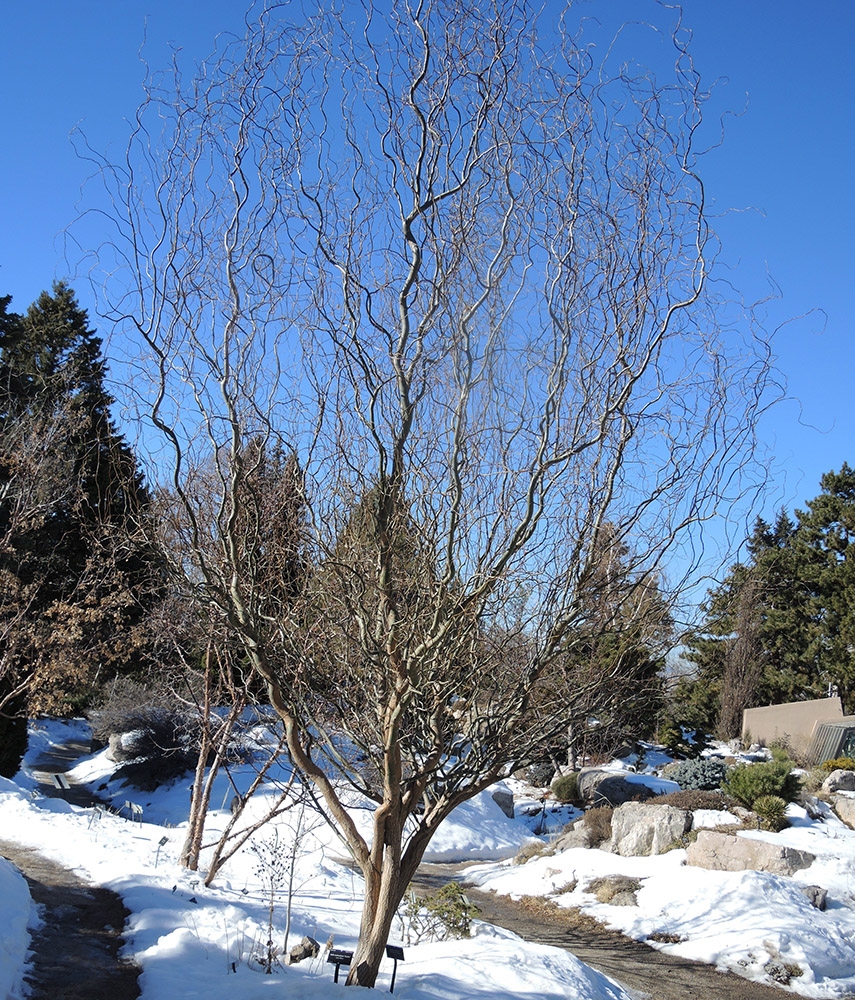
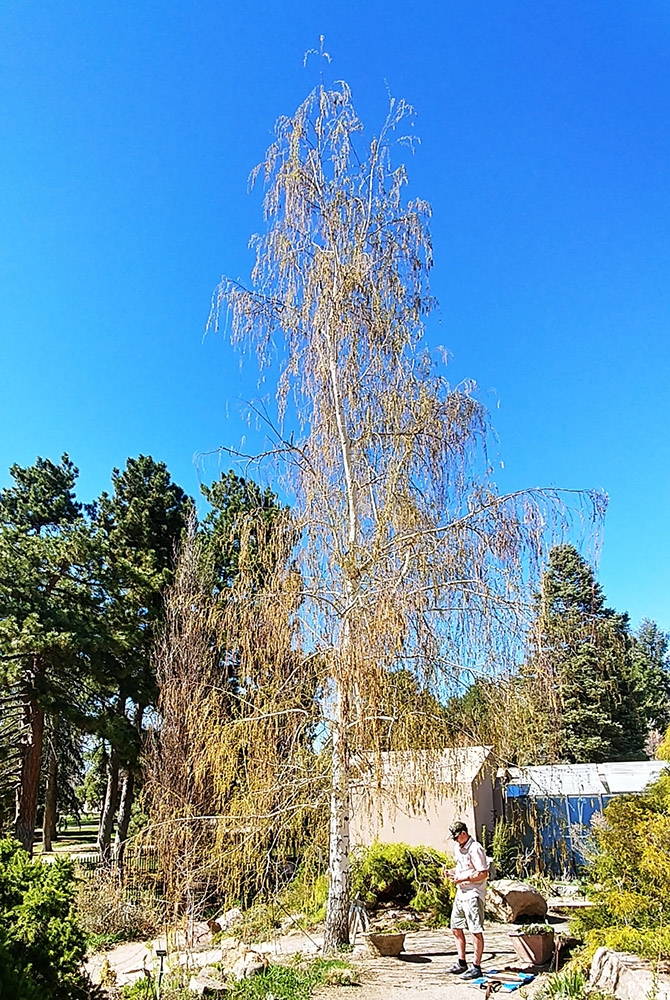
Add new comment